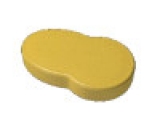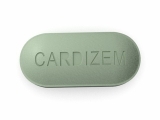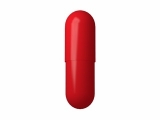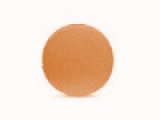What is micromeritics in pharmacy
Micromeritics, a branch of science that deals with the study of small particles and their properties, plays a crucial role in the field of pharmacy. It involves the measurement of particle size, shape, and surface area, as well as the analysis of particle distribution and porosity. Micromeritics helps pharmaceutical scientists understand the behavior and performance of pharmaceutical materials, which is essential for the development and optimization of drug formulations.
The accurate measurement of particle size is of utmost importance in pharmacy as it directly influences the drug's solubility, dissolution rate, and bioavailability. Micromeritics allows scientists to determine the optimal particle size for drug delivery systems, ensuring effective drug delivery to the target site in the body. Whether it is a tablet, capsule, or injectable, the particle size distribution must be carefully controlled to ensure uniform drug release and therapeutic efficacy.
Moreover, micromeritics provides insights into the physical characteristics of pharmaceutical materials, such as their flowability, compressibility, and stability. By understanding these properties, pharmaceutical scientists can design robust manufacturing processes that yield consistent and reliable drug products. Micromeritics also helps in assessing the potential interactions between drug particles and excipients, enabling the formulation of stable and compatible drug products.
In addition to formulation development, micromeritics is essential in quality control and regulatory compliance in the pharmaceutical industry. By using advanced particle characterization techniques, such as laser diffraction and microscopy, pharmaceutical companies can ensure batch-to-batch consistency, identify impurities or contaminants, and meet the stringent quality standards set by regulatory authorities. Micromeritics plays a pivotal role in ensuring the safety, efficacy, and quality of drug products before they are made available to the public.
What is Micromeritics?
Micromeritics is the scientific field that deals with the measurement and characterization of the physical and chemical properties of small particles or powders. It involves the study of various parameters such as particle size, shape, surface area, porosity, and density.
Particle size: Micromeritics focuses on determining the size of particles, which can range from nanometers to millimeters. This parameter is crucial because particle size influences the behavior and functionality of many pharmaceutical products, such as tablets, suspensions, and inhalers.
Surface area: Understanding the surface area of particles is vital in pharmacy as it affects the dissolution rate, reactivity, and stability of drug formulations. Micromeritics helps in determining the specific surface area, which is an indicator of the particle's ability to interact with its surroundings.
Pore size and distribution: Micromeritics enables the characterization of pores within particles or powders. The size and distribution of pores are important in various drug delivery systems, as they can affect drug loading, release kinetics, and stability.
Density: Micromeritics also involves measuring the density of particles, which is crucial for understanding the packing properties, flowability, and compressibility of solid dosage forms. Density measurements aid in the design and optimization of pharmaceutical formulations.
In conclusion, micromeritics plays a vital role in pharmacy by providing valuable information about the physical and chemical properties of particles and powders. This knowledge aids in the development, formulation, and optimization of various pharmaceutical products, ensuring their quality, efficacy, and safety.
Definition and Explanation of Micromeritics in Pharmacy
Micromeritics refers to the scientific field that is concerned with the study of the physical and chemical properties of small particles and their behavior in pharmaceutical systems. It involves the measurement and characterization of particle size, shape, surface area, and porosity, as well as the study of particle interactions and aggregation.
Micromeritics is a crucial aspect of pharmacy as it provides valuable information about the physical and chemical properties of pharmaceutical powders and particles. Understanding these properties is essential for developing and formulating drug products, as well as for ensuring their quality, stability, and efficacy.
Importance of Micromeritics in Pharmacy
1. Formulation Development: Micromeritics helps in the development of pharmaceutical formulations by determining the optimal particle size and shape that can enhance drug dissolution, absorption, and bioavailability.
2. Quality Control: Micromeritics plays a vital role in quality control by providing accurate measurements of particle size distribution, which is crucial for ensuring uniformity and consistency in drug products.
3. Drug Stability: The physical properties of particles, such as surface area and porosity, can affect the stability of drug substances and formulations. Micromeritics helps in understanding these properties and making necessary adjustments to improve the stability and shelf-life of drugs.
4. Drug Delivery Systems: Micromeritics is essential for the development of various drug delivery systems, such as nanoparticles, liposomes, and microparticles. It helps in optimizing the particle size and surface characteristics to achieve the desired drug release profile and targeting.
5. Process Optimization: Micromeritics provides information about the flowability and compressibility of powders, which is important for optimizing manufacturing processes, such as blending, granulation, and tableting.
In conclusion, micromeritics is a critical discipline in pharmacy that plays a vital role in the development, formulation, and quality control of pharmaceutical products. It helps in understanding and optimizing the physical and chemical properties of particles, leading to improved drug performance and patient outcomes.
Importance of Micromeritics in Pharmacy
Micromeritics, the science of small particle measurement, plays a crucial role in the field of pharmacy. The understanding and application of micromeritics is vital for the development, manufacturing, and quality control of pharmaceutical products.
Optimizing Drug Formulation
Micromeritics helps in the optimization of drug formulations by studying the physical properties of particles, such as size, shape, surface area, and porosity. These factors greatly influence the drug's performance, stability, and bioavailability. By carefully analyzing these properties, pharmacists can design and develop optimized drug formulations that enhance therapeutic efficacy and patient compliance.
Ensuring Uniformity and Stability
Micromeritics also helps in ensuring the uniformity and stability of pharmaceutical products. By measuring particle size and distribution, pharmacists can monitor batch-to-batch variations and identify any potential issues that may affect the product's performance or stability. By maintaining particle size consistency, pharmacists can ensure that each dosage form delivers the correct amount of medication, providing patients with reliable and predictable treatment outcomes.
Controlling Drug Release
Controlling drug release is a critical aspect of pharmaceutical formulations. Micromeritics allows pharmacists to study the properties of drug particles and their interaction with excipients. This knowledge helps in designing controlled-release dosage forms, such as extended-release tablets or transdermal patches, where the drug is released gradually over a specific period. By understanding the micromeritics of drug particles, pharmacists can tailor drug release profiles to meet specific therapeutic needs.
Ensuring Product Safety and Efficacy
Micromeritics is essential in ensuring the safety and efficacy of pharmaceutical products. By measuring and analyzing particle properties, pharmacists can identify potential contaminants, agglomerates, or irregularities that could compromise the product's quality or pose a risk to the patient. Micromeritics helps in detecting any deviations from desired particle characteristics and allows for corrective actions to be taken to maintain product integrity and patient safety.
In conclusion, micromeritics plays a crucial role in pharmacy by optimizing drug formulation, ensuring uniformity and stability, controlling drug release, and ensuring product safety and efficacy. Its application allows pharmacists to develop and manufacture high-quality pharmaceutical products that provide effective and safe treatment to patients.
Why Micromeritics is Essential for Pharmaceutical Manufacturing
Micromeritics, also known as particle size analysis, is an essential aspect of pharmaceutical manufacturing. It involves the measurement and characterization of particulate matter, which is crucial for ensuring the quality, safety, and efficacy of pharmaceutical products. By understanding the properties of particles, pharmaceutical manufacturers can optimize formulations, control processes, and ensure the desired therapeutic outcomes.
Quality Control and Assurance
Micromeritics plays a key role in quality control and assurance in pharmaceutical manufacturing. By analyzing the particle size distribution, manufacturers can monitor the consistency of raw materials, intermediates, and final dosage forms. This helps to identify any variations or impurities that may affect the quality and performance of the drugs. Through regular micromeritics analysis, pharmaceutical companies can maintain batch-to-batch consistency and ensure the safety and efficacy of their products.
Optimization of Formulations
The particle size of pharmaceutical ingredients has a significant impact on the formulation and performance of drugs. Micromeritics allows manufacturers to understand the behavior and characteristics of different particle sizes, enabling them to optimize formulations for better drug delivery and bioavailability. By controlling the particle size distribution, pharmaceutical companies can enhance the dissolution rate, solubility, and stability of their products, ultimately improving the patient's experience and therapeutic outcomes.
Process Control and Efficiency
Efficient pharmaceutical manufacturing processes require precise control over particle size. With micromeritics analysis, manufacturers can monitor and adjust various processing parameters to achieve the desired particle size distribution. By maintaining tight control over particle size, pharmaceutical companies can minimize variations, reduce waste, and improve process efficiency. This not only streamlines production but also reduces costs and ensures consistent product quality.
In conclusion, micromeritics is an indispensable tool in pharmaceutical manufacturing. It provides crucial insights into particle size distribution, enabling manufacturers to ensure product quality, optimize formulations, and optimize processes. By investing in micromeritics analysis, pharmaceutical companies can enhance their competitiveness, meet regulatory requirements, and deliver safe and effective medications to patients.
Methods and Techniques of Micromeritics
Sedimentation method
The sedimentation method is one of the most commonly used techniques in micromeritics. It involves measuring the settling velocity of solid particles in a liquid medium. This method is based on Stoke's law, which states that the settling velocity of particles is directly proportional to their size and density, and inversely proportional to the viscosity of the liquid. By measuring the settling velocity, the particle size distribution can be determined.
Laser diffraction method
The laser diffraction method is a non-invasive technique used to determine the particle size distribution of a sample. It involves passing a laser beam through a dispersed sample of particles and measuring the diffraction pattern produced. The intensity of the diffracted light at different angles can be used to calculate the particle size distribution. This method is widely used in various industries, including pharmacy, due to its high accuracy and wide dynamic range.
Surface area determination
Surface area determination is an important aspect of micromeritics, as it provides information about the physical properties of particles. There are several techniques available for surface area determination, including the BET (Brunauer-Emmett-Teller) method, gas adsorption method, and the Langmuir method. These methods involve adsorbing a gas onto the surface of the particles and measuring the amount of gas adsorbed. The surface area can then be calculated using various equations.
Pore size analysis
Pore size analysis is another important aspect of micromeritics, especially in the field of pharmacy. It involves determining the size and distribution of pores in solid materials. Various techniques, such as mercury intrusion porosimetry, gas adsorption, and capillary flow porometry, are used for pore size analysis. These techniques provide valuable information about the accessibility and functionality of pores in pharmaceutical materials.
Particle shape analysis
Particle shape analysis is an essential aspect of micromeritics, as the shape of particles can greatly affect their properties and behavior. There are several techniques available for particle shape analysis, including microscopy, image analysis, and laser diffraction. These techniques allow for the determination of parameters such as aspect ratio, roundness, and sphericity, which play a crucial role in pharmaceutical applications.
Common Techniques and Instruments used in Micromeritics
Sieve analysis:
Sieve analysis is a commonly used technique in micromeritics to determine the particle size distribution of a sample. This technique involves passing the sample through a series of sieves with different mesh sizes. The particles are separated based on their size, and the amount of material retained on each sieve is measured. The data obtained from sieve analysis can be used to calculate important parameters such as mean particle size, size distribution, and the percentage of material within a specific size range. Instruments commonly used for sieve analysis include sieve shakers and analytical balances.
Laser diffraction:
Laser diffraction is another widely used technique in micromeritics for determining the particle size distribution of a sample. This technique involves passing a laser beam through the sample and measuring the intensity of the scattered light at different angles. The scattering pattern provides information about the particle size distribution. Instruments commonly used for laser diffraction include laser diffraction analyzers.
Surface area analysis:
Surface area analysis is an important technique in micromeritics for measuring the specific surface area of a material. This technique is based on the principle that the adsorption of a gas or liquid on a solid surface is proportional to the available surface area. Instruments commonly used for surface area analysis include gas sorption analyzers, such as the BET (Brunauer-Emmett-Teller) method, and liquid sorption analyzers.
Pycnometry:
Pycnometry is a technique used in micromeritics to determine the density of a sample. This technique involves measuring the volume of a known mass of the sample and using this information to calculate the density. Instruments commonly used for pycnometry include pycnometers, which are vessels with a precisely known volume.
Pore size distribution analysis:
Pore size distribution analysis is a technique used to measure the distribution of pore sizes in a material. This information is important for understanding the material's porosity and its potential applications. Instruments commonly used for pore size distribution analysis include mercury intrusion porosimeters and nitrogen adsorption analyzers.
In summary, common techniques and instruments used in micromeritics include sieve analysis, laser diffraction, surface area analysis, pycnometry, and pore size distribution analysis. These techniques provide valuable information about particle size, density, surface area, and porosity, which are critical for understanding the properties and performance of pharmaceutical materials.
Applications of Micromeritics in Pharmacy
Micromeritics plays a crucial role in various areas of pharmacy. It is extensively used in the development and formulation of pharmaceutical products, as well as in quality control and quality assurance processes.
Particle Size Analysis
One of the main applications of micromeritics in pharmacy is in particle size analysis. Determining the particle size distribution of pharmaceutical materials is important for several reasons. It can affect the dissolution rate, bioavailability, and stability of drug products. Micromeritics techniques such as laser diffraction, sedimentation, and microscopy are used to measure and analyze particle size, shape, and surface area.
Formulation Development
Micromeritics is vital in the formulation development of pharmaceutical products. Understanding the characteristics and behavior of drug substances and excipients is crucial for creating effective dosage forms. Micromeritics techniques help optimize the particle size, surface area, and porosity of drug particles, which in turn affect drug release, solubility, and stability.
Quality Control and Assurance
Micromeritics also plays a significant role in quality control and quality assurance processes in the pharmaceutical industry. It helps ensure the consistency and uniformity of drug products by monitoring particle size distribution, porosity, and bulk density. These parameters are crucial in determining the performance, dissolution rate, and content uniformity of pharmaceutical dosage forms.
Particle Engineering
Micromeritics techniques are used in particle engineering, which involves modifying the properties of drug particles to improve their performance. By manipulating the particle size, shape, and surface area, pharmaceutical scientists can enhance drug solubility, dissolution rate, and bioavailability. Micromeritics tools are essential for optimizing the particle engineering process and achieving the desired drug delivery profile.
In conclusion, micromeritics has a wide range of applications in pharmacy, including particle size analysis, formulation development, quality control and assurance, and particle engineering. It helps pharmaceutical scientists understand and manipulate the characteristics of drug particles, leading to the development of more effective and reliable dosage forms.
How Micromeritics is Used in Drug Development and Formulation
1. Particle Size Analysis:
Micromeritics is an essential tool in drug development and formulation as it helps in determining the particle size of the drug substance. Particle size plays a crucial role in the bioavailability and stability of a drug. By using techniques such as laser diffraction or microscopy, researchers can analyze the size distribution of particles in a drug formulation. This information is then used to optimize the formulation and ensure consistent and effective drug delivery.
2. Surface Area Determination:
In drug development, the surface area of a drug substance is an important parameter that affects its dissolution rate and stability. Micromeritics is used to measure the specific surface area of a sample, which provides valuable information about its reactivity and potential interactions with other components in a formulation. This data is crucial for formulating drugs with improved solubility and bioavailability.
3. Porosity Analysis:
Porosity is another critical factor in drug development as it influences the drug's release rate and permeability. Micromeritics enables researchers to measure the porosity of a drug substance or its carrier material. This information is used to design drug delivery systems with controlled release properties and optimal drug loading capacities.
4. Bulk Density Determination:
The bulk density of a drug substance or formulation impacts its flow properties, compressibility, and dosage form manufacturing. Micromeritics is utilized to determine the bulk density of powders, granules, or tablets. This data helps pharmaceutical scientists in selecting appropriate excipients, predicting the flow behavior of powders, and ensuring uniformity in the final dosage form.
5. Moisture Sorption Studies:
Moisture sorption analysis using micromeritics techniques allows researchers to understand the water absorption characteristics of drug substances and excipients. This information is crucial for formulating moisture-sensitive drugs to prevent degradation, enhance stability, and determine appropriate packaging conditions.
6. Compatibility Studies:
Micromeritics is used to perform compatibility studies between drug substances and excipients. By analyzing the physical and chemical interactions between different components, researchers can identify any potential incompatibilities that may affect the drug's efficacy, stability, or safety. This information guides the selection of suitable excipients and helps in the formulation of stable and effective drug products.
In conclusion, micromeritics is a valuable tool in drug development and formulation. It provides essential information about particle size, surface area, porosity, bulk density, moisture sorption, and compatibility. By using these data, pharmaceutical scientists can optimize drug formulations, enhance drug delivery, improve stability, and ensure the efficacy and safety of the final drug products.
Follow us on Twitter @Pharmaceuticals #Pharmacy
Subscribe on YouTube @PharmaceuticalsYouTube





Be the first to comment on "What is micromeritics in pharmacy"